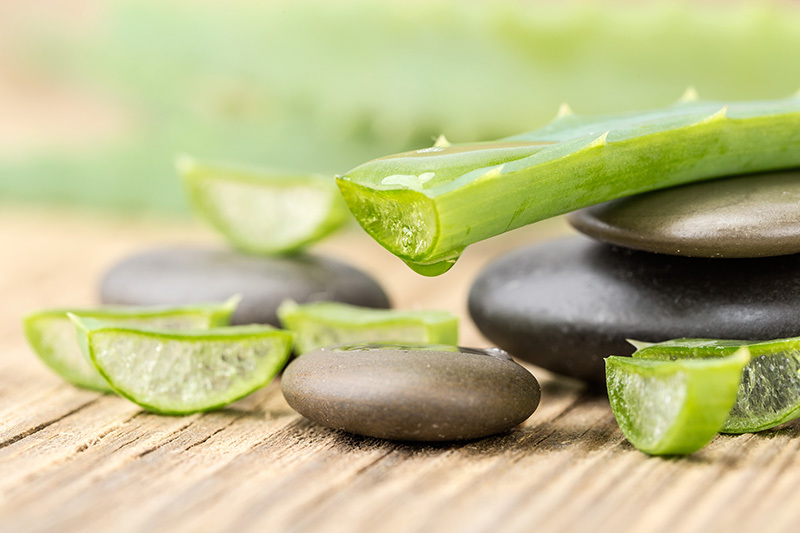Practical Advice for Looking After Cut Flowers
Posted on 22/08/2025
Practical Advice for Looking After Cut Flowers
Are you striving to keep your beautiful bouquets fresh and vibrant for as long as possible? Proper flower care can make the difference between petals that droop within days and arrangements that light up your home for over a week. Whether you have received an elegant arrangement after a special occasion or simply love the ritual of buying flowers for yourself, understanding how to care for cut flowers is essential. In this comprehensive guide, you'll discover proven tips, professional secrets, and science-backed advice for extending the life and beauty of your fresh blossoms.

Why Do Cut Flowers Wilt?
Cut flowers naturally begin to deteriorate as soon as they are separated from their roots. With their water supply disrupted, they rapidly lose vitality--but with the right flower care techniques, you can slow this process dramatically. Common reasons for wilting include:
- Lack of water or nutrients
- Bacteria build-up in the vase
- Exposure to heat or sunlight
- Incorrect vase preparation
Luckily, effective cut flower care can counteract these issues, allowing you to enjoy your bouquet for longer.
Essential Steps for Looking After Cut Flowers
1. Selecting the Right Flowers
Before you even get your flowers home, their longevity depends on quality and freshness. Here's what to keep in mind:
- Choose blooms with closed buds: Flowers just beginning to open last the longest in arrangements.
- Check stems and leaves: Look for strong, green stems and leaves with no signs of wilting or rot.
- Avoid bruised petals: Petals with blemishes or spots indicate aging or mishandling.
2. Prepping Your Flowers Properly
Handling your cut flowers correctly from the start is key to maximizing their vase life:
- Unwrap & Inspect: Remove packaging and any rubber bands. Discard soft, droopy stems or damaged blooms.
- Remove excess leaves: Strip away all foliage that would rest below the waterline. Leaves in water promote bacterial growth, which significantly shortens flower lifespan.
- Trim the stems: Using sharp, clean scissors or a knife, make a fresh, diagonal cut on each stem about 2cm (1 inch) from the bottom. This increases surface area for water uptake and prevents the stems from sitting flat on the bottom of the vase.
3. The Importance of the Right Vase
The vessel you select is more than just a decorative detail--it plays a practical role in caring for cut flowers.
- Cleanliness matters: Always wash your vase thoroughly with hot, soapy water before use. Any residue or bacteria can hasten wilting.
- Vase size: Ensure the vase is tall and spacious enough for your chosen stems, supporting them without overcrowding.
- Depth: Add enough water to cover the lower third to half of the stems.
4. The Right Water Makes a Difference
Water quality, temperature, and additives all affect the longevity of your flowers.
- Room temperature is best: Most blooms absorb tepid (not cold) water better.
- Changing water regularly: Replace with fresh, clean water every 2 days to prevent bacteria growth.
- Flower food: Most bouquets come with a sachet of flower food. Use it! It contains essential nutrients and antibacterial agents.
If you're out of flower food, make your own by mixing 1 teaspoon of sugar and a few drops of bleach or white vinegar per quart of water. The sugar nourishes, while the bleach or vinegar restricts bacteria.
5. Ideal Display Environment
Where you place your arrangement can dramatically impact flower longevity. Consider these simple guidelines:
- Avoid direct sunlight and sources of heat like radiators or appliances, which can rapidly dehydrate delicate petals.
- Keep away from fruit bowls: Ripening fruit gives off ethylene gas, which accelerates flower aging.
- Draft-free zones: Avoid placing arrangements near open windows, doors, or air conditioning vents.
Extra Tips for Long-Lasting Cut Flowers
Mastering the basics is a great start, but seasoned florists rely on a handful of secrets to keep blooms looking brilliant. Here are some additional care tips for cut flowers:
- Prune daily: Remove any drooping, wilted, or discolored flowers and foliage promptly. This prevents the spread of bacteria and keeps the display attractive.
- Mist the petals: Lightly misting the petals (especially for flowers like orchids or ranunculus) can help maintain turgidity and vibrant color.
- Be gentle: Handle blooms carefully, particularly delicate varieties. Rough handling can bruise petals, inviting decay.
- Try a nightly chill: If possible, keep your arrangement in a cool room, or even refrigerate it (without fruit) overnight to mimic florist storage techniques.
Caring for Different Types of Cut Flowers
Not all cut flowers are created equal! Each type may benefit from customized care:
- Roses: Recut stems underwater to prevent air bubbles. Remove thorns and all leaves below the waterline.
- Tulips: These thirsty flowers keep growing after being cut! Add water frequently and provide tall vases for support.
- Lilies: Remove pollen-covered anthers to avoid stains and lengthen the bloom's vase life.
- Daffodils: Let their stems "bleed out" in a separate container before arranging with other flowers, as their sap can be toxic to companions.
- Hydrangeas: Submerge the heads briefly in water to revive wilt, and crush stems to maximize water uptake.
Common Mistakes to Avoid in Cut Flower Maintenance
Even with the best intentions, certain habits can sabotage your floral arrangements. Watch out for these common errors:
- Neglecting water changes: Stagnant water encourages slime, cloudiness, and bacteria that quickly kill flowers.
- Not recutting stems regularly: Once the stem ends seal, they absorb less water.
- Forgetting flower food: It's easy to overlook, but these nutrients and antibacterial agents really make a difference.
- Overcrowding your vase: Tightly packed arrangements inhibit air circulation and promote mold.
- Exposing to bright lights and drafts: As tempting as it may be to showcase blooms in a sunny spot, shade and stable conditions are best.
Natural DIY Alternatives for Cut Flower Care
No commercial flower food? Try these easy home remedies to nourish your bouquets:
- Aspiration solution: Mix 1 teaspoon of sugar (for nourishment), 1-2 drops of bleach (as antibacterial), and a small splash of lemon or lime juice (to acidify the water and improve nutrient absorption).
- Soda trick: A quarter cup of clear soda (like Sprite) in your vase water serves a similar purpose, providing sugar and acidity.
- Apple cider vinegar and sugar: Mix 2 tablespoons each per quart of vase water for a nourishing and antibacterial boost.
With any homemade solution, replace the water every couple of days to prevent residue build-up and bacterial growth.
The Science Behind Cut Flower Longevity
Understanding what causes cut flowers to fade can help you make smarter choices. Here's what happens after flowers are picked:
- Loss of water: Without roots, flowers must rely on capillary action through their stems to draw up water. When stems are clogged or dry, petals wilt.
- Bacteria invasion: Decaying matter in the vase provides ideal conditions for bacteria, which block water uptake and speed up decomposition.
- Nutrient starvation: Cut flowers miss the minerals and sugars supplied by the plant, so flower food mimics their natural support system.
Understanding these simple facts enables you to take effective action to keep your flowers fresher for longer!

Expert Answers to Common Flower Care Questions
-
How often should I change my vase water?
Every two days is ideal, but daily is perfect for especially delicate blooms--or if you notice cloudiness. -
Should I cut flower stems at an angle?
Yes! An angled cut boosts the surface area for water intake and prevents flat stems from being blocked at the base of the vase. -
What if my blooms arrive wilted?
Recut stems and submerge the bouquet (including heads) in cool water for 30 minutes. This can revive limp flowers. -
Can I revive drooping blooms?
Try the full submersion trick mentioned above, check that stems are open (uncut), and always provide fresh water and food.
Summary: The Art of Cut Flower Care
Looking after fresh cut flowers isn't just about extending their beauty--it's a way of appreciating nature's fleeting elegance in your own space. With these practical flower care tips, you'll get the most out of every bouquet, making them a source of enduring delight.
- Always use a clean vase and fresh water to reduce bacteria.
- Recut stems every 2-3 days for improved hydration.
- Use flower food or homemade alternatives to feed and protect your blooms.
- Keep arrangements away from heat, sun, drafts, and fruit to maximize vase life.
- Remove spent blooms promptly to maintain overall freshness and look.
Caring for cut flowers is a blend of science, tradition, and a little daily attention. Practice these cut flower care techniques and you'll enjoy richer colors, crisper petals, and longer-lasting enjoyment--from a single bloom to an elaborate arrangement. Keep your flowers fresher for longer and let their beauty enhance your everyday.
Explore, experiment, and enjoy fresh flowers--one of nature's simplest and sweetest pleasures!
Latest Posts
The romantic evolution of red roses on Valentine's Day
Discover How to Sustain Vibrant Poinsettias Indoors
Rediscover Sunflowers with These 8 Eye-Opening Facts
Practical Advice for Looking After Cut Flowers
Unveil the Secrets to Flower Preservation with 3 Easy Methods







